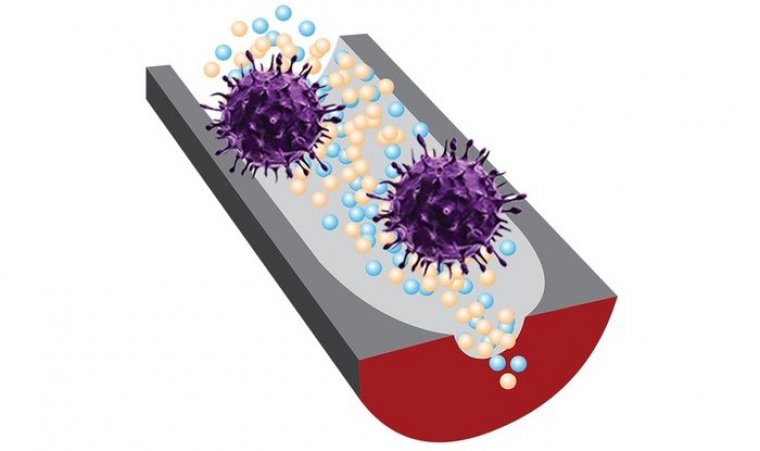| News / Science News |
DNA sensor quickly determines whether viruses are infectious
A new sensor can detect not only whether a virus is present, but whether it's infectious -- an important distinction for containing viral spread.

A new sensor can distinguish infectious viruses from noninfectious ones. Photo: Ana Peinetti
Researchers at the University of Illinois Urbana-Champaign and collaborators developed the sensor, which integrates specially designed DNA fragments and nanopore sensing, to target and detect infectious viruses in minutes without the need to pretreat samples.
They demonstrated the sensor's power with two key viruses that cause infections worldwide: the human adenovirus and the virus that causes COVID-19.
Yi Lu and Benito Mariñas at the University of Illinois Urbana-Champaign co-led the work with University of Illinois Chicago scientist Lijun Rong; Omar Azzaroni of the National University of La Plata in Argentina; and María Eugenia Toimil-Molares of the GSI Helmholtz Centre for Heavy Ion Research in Germany.
"The infectivity status is very important information that can tell us if patients are contagious or if an environmental disinfection method works," said Ana Peinetti, the first author of the study. Peinetti, formerly of the University of Illinois Urbana-Champaign, is now at the University of Buenos Aires in Argentina.
"Our sensor combines two key components: highly specific DNA molecules and highly sensitive nanopore technology. We developed specific DNA molecules, named aptamers, that not only recognize viruses but can differentiate the infectivity status of the virus."
The "gold standard" of viral detection, the PCR test, detects viral genetic material but cannot distinguish whether a sample is infectious or determine whether a person is contagious.
This can make it more difficult to track and contain viral outbreaks, the researchers said. (National Science Foundation)
YOU MAY ALSO LIKE





